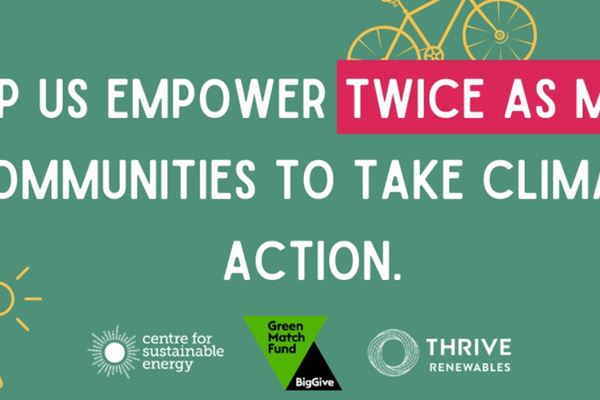In the same week that the government published its response to its consultation into community benefit for onshore wind (Developing local partnerships for onshore wind in England), new data has found that no applications were submitted for new onshore wind projects in England during 2023. The demand for competitively priced renewable energy is high, and there is an abundance of suitably windy sites in the UK, so what is the issue?
Figures by the Department for Energy Security and Net Zero, and analysed by think tank New Economics Foundation, revealed that only seven applications were submitted last year – but all of those related to the replacement of existing turbines or were for private sites, where the energy produced is destined for a particular consumer, such as a business.
The number was lower than the 10 applications submitted in 2022, when the de facto ban was still in place, despite the adjustments made to the National Planning Policy Framework in September 2023 which the government claimed would “make it easier and quicker for onshore wind projects to come forward, where there is local support”.
Is it only England that’s falling behind?
In contrast to the lack of new applications in England, Scotland saw 46 applications made for grid- connected onshore wind farms last year and has openly embraced the technology as part of its future energy mix. Through the Scottish Onshore Wind Sector Deal, which was signed by the government and major industry players in September 2023, it has outlined a number of measures to help ensure Scotland delivers on its promises of 20GW of onshore wind by 2030 - more than double its current operational capacity of 9.38GW.
This includes:
- a commitment that it will take no longer than a year for Scottish onshore wind farms to go through the planning system,
- engagement with local communities at the earliest opportunity to agree a package of community benefits, and
- greater recycling of turbine components to make the supply chain even more sustainable.
And if Scotland can do it, why can’t the rest of the UK follow suit? Especially when we know that people are not only in favour of onshore wind, but that the technology is instrumental in delivering cheaper, cleaner power to households still feeling the effects of the recent energy and cost of living crises. In fact, research by Carbon Brief found that the de facto ban in England had cost billpayers a "staggering" £5.1 billion in 2022.
“Onshore wind remains the cheapest source of clean energy in the UK and has already contributed to billions in savings for UK households. But England continues to miss out on tapping this valuable resource, while Scotland and the rest of Europe add large amounts of wind capacity every year.” – Chaitanya Kumar, head of environment and green transition, New Economics Foundation thinktank
While the government’s micro-adjustments in policy have evidently had little effect, we were still waiting for the results of the government’s consultation into community benefit, launched in May 2023 as part of what was – at the time – dubbed “green day”. Now published, it sought “views on improvements that could be made to the existing system of community engagement and community benefits for onshore wind in England”, with 76 responses from a variety of stakeholders, including Thrive.
What are the results of the government’s consultation?
Following the consultation, the government has confirmed that it intends to:
- Formally embed best practice principles of community engagement into official planning guidance.
- Work with the onshore wind industry and other stakeholders to update the Community Benefits Protocol for Onshore Wind in England.
- Take ownership of the Community Benefits Protocol and publish it as official guidance on GOV.UK, providing the whole of the onshore wind industry with clear expectations on community benefits and giving greater certainty to communities.
- Provide supporting information and case studies on community benefits to help upskill local communities and streamline the community benefits process, including setting out the instances in which developers could provide additional support to communities.
- Develop a mechanism for the onshore wind industry to formally sign-up and endorse the updated Protocol, which will provide greater trust and transparency for communities.
- Consider establishing a public community benefits register that can capture details of community benefit packages, to allow communities to compare offers and drive best practice.
We absolutely agree that onshore wind projects should benefit local communities and will continue to work with community energy groups looking to make their projects a reality. However, the government needs to understand that communities will not get to reap any benefits at all if projects never make it into existence. The fact that there were no planning applications in 2023 is proof that developers are still struggling to justify the high cost of navigating the planning process, without clarity on the likelihood of success. We believe that significant reform is still needed if we are to harness wind power to its full potential.
What we have, and will continue calling for, is for onshore wind to be treated in the same way as other infrastructure projects, as well as the removal of footnote 54 (which sets out the conditions that have to be met for development to be considered 'acceptable) from the National Planning Policy Framework.



